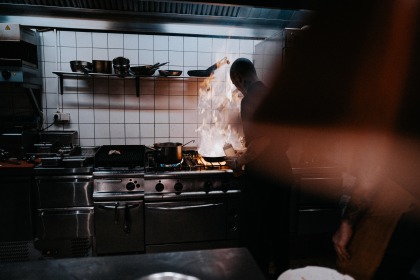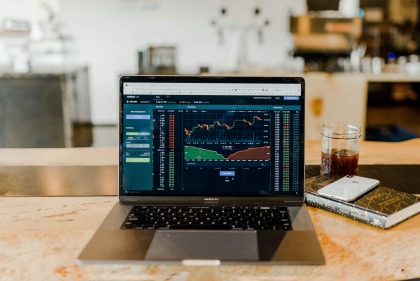How to Create a Restaurant Cash Flow Statement
Every manager has to handle their first cash flow statement at some point. This means learning terms, filling in the figures, and figuring out why it matters. But once that’s done, these statements can be really useful for assessing how well you’re doing, planning any investments, and mapping out the future of your restaurant.
Why do these statements matter?
Cash flow statements are useful documents for assessing how well a business is functioning. Investors will want to look at these statements when judging whether or not to put money into a business. Owners can use cash flow figures to determine how to invest any available cash back into the business. Therefore, a statement compared with past statements and other financial reports can be arranged into a cash flow projection format.
 There are three main segments to a cash flow statement: operating activities (also called operating cash flow or OCF), investing activities, and financing activities. These will be detailed below, but each one allows businesses to assess where the money and assets of the business currently are and what form they’re in.
There are three main segments to a cash flow statement: operating activities (also called operating cash flow or OCF), investing activities, and financing activities. These will be detailed below, but each one allows businesses to assess where the money and assets of the business currently are and what form they’re in.
This is important to planning as some forms of wealth are easier to access than others. Cash flow statements also show inflowing and outflowing cash and so state how much income is already spoken for or has been previously spent.
A restaurant has money invested in many forms like inventory and depreciating fixed assets like kitchenware or furniture. Combined with marketing and building expenses, different revenue and expense streams, there is a lot to stay on top of and a cash flow statement can help with that.
Operating Cash Flow (OCF)
The section on operating cash flow considers income and expenditure from a business's day-to-day operations. This includes the value of a restaurant's current inventory holdings (the value of stock held i.e unsold/used food and drink), accounts receivable and payable, and the crucial net income figure.
The net income figure takes the most work to calculate but is easier if a business balances its tills correctly. It covers the revenue a restaurant gains from sales of food and beverages, deliveries, and any other income gained from customers (pool table hire would be another example) with the direct costs involved in generating that revenue deducted.
Those deductions are called the cost of goods sold (COGS). This figure is generated by calculating how much was spent on producing the restaurant's food and beverages and anything else the business sells. Added to this figure are SG&A costs: SG&A stands for selling, general, and administrative expenses which include expenses less directly related to the production of goods. These are expenses like salaries, taxes, utility bills, rent or mortgage payments, marketing and advertising, tradespersons fees, and other miscellaneous costs that have cropped up over the period accounted for.
Other factors in OCF
There are two main ways of calculating net income: direct and indirect. Many companies will calculate both as both have benefits and drawbacks. The direct method tends to be calculated through a straightforward record and receipts approach. Sales receipts are played off against expense receipts and a figure is calculated.
 However, given the cost and value of specialist equipment restaurant’s have, it can also be useful to calculate and anticipate depreciation of your kitchen and bar. D&A, depreciation and amortization, are figures sometimes deducted from net income.
However, given the cost and value of specialist equipment restaurant’s have, it can also be useful to calculate and anticipate depreciation of your kitchen and bar. D&A, depreciation and amortization, are figures sometimes deducted from net income.
The depreciation amount would be the loss in value to a tangible asset over the accounting period. Amortization is the same only for intangible assets. To know the difference between the two, depreciation is for physical objects like a fridge, amortization is for non-physical objects like a contract or loan that is being paid off. For example, a fridge that has an expected life of 10 years will lose 10% of its value each year, and it can be useful to incorporate this into your cash flow statement.
Finally, a restaurant must also consider the expected inflow and outflow of cash from accounts receivable (AR) and accounts payable (AP). These are bills and accounts with funds outstanding. For instance, a restaurant may have trusted customers who are allowed to owe money and would therefore have a significant figure of monies owed that ought to be considered in the OCF as AR. On the other hand, tradespersons, suppliers, and any other service providers with bills still to be paid make the AP figure.
Combining income and expenses makes the net income figure, which is one of the most crucial figures as it shows whether the business is making money, or at least has the potential to do so.
Investing cash flow
Investing activities cover the purchasing of assets and equipment (separate to inventory expenses), acquisitions, and money spent on research and development.
For many restaurants, investing cash flow will largely be conducted in the purchasing of PP&E. These are the assets that depreciate in value in the OCF section: kitchen equipment, furniture, glasses, and dining ware. However, it can also cover the purchasing of computers and software, vehicles, and machinery. These expenses are called capital expenditures (CapEx) and are necessary for running the business.
Other investments such as further buildings for opening branches, acquisition of smaller companies to expand the business, or construction and development work to improve the business can also be included here as outflowing cash.
These figures can be quite high during times of expansion. When trying to judge the success of a restaurant, it is important to look at the nature of such expenses. A low or negative cash flow can suggest a business is struggling, but if cash is short because of investment, then the investing activities are likely to lead to greater cash flow in the future.
Financing Cash Flow
 When building a cash flow statement, the third section required refers to financing the business and stock activity.
When building a cash flow statement, the third section required refers to financing the business and stock activity.
For instance, if a business takes out a loan to generate cash to invest in expansion or purchase necessary equipment then it will be recorded here. It is important to record this cash inflow separately to the operating cash flow as it is finance that will need to be repaid (and repayments would be recorded here as cash outflow).
Stock issuance, purchases, and dividend payments would also be recorded here as these are purely financial (intangible) sales indirectly related to day-to-day trading but can be used to generate or spend financing for the business.
Cash Balance
The sum of these three sections creates a total cash balance of how much money the business has generated this period. The figure must be adjusted with last year's cash balance deducted as that was money made in the previous period.
The best headache cure: a restaurant cash management system
Cash flow statements are invaluable for many restaurants but can be time-consuming. But if your business utilizes a POS system that can automate accountancy, then when you wish to construct a cash flow forecast template for restaurant activity the data will already be available.
Epos Now users running restaurants save days of work with:
- Sales data automatically stored by transaction, items sold, date, payment type and more
- Downloadable reports available in multiple formats for easy access and transfer
- Cloud-based systems allowing you to work on accounts wherever and whenever suits you
- In house accounting reports preset to accountant needs and available integration with big-name accounting software
To find out more about Epos Now software and hardware restaurant solutions, contact our expert team or submit your data below.
Find out how your store could benefit from a POS trusted by over 40,000 businesses worldwide.
Submit your details and speak with an expert about the advantages of POS to restaurants everywhere.
